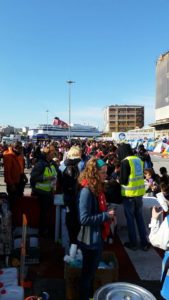
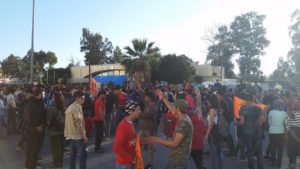
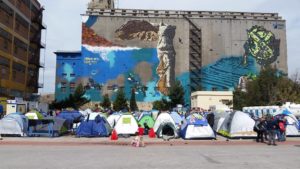
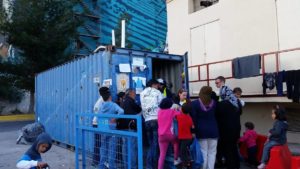
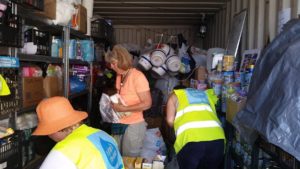
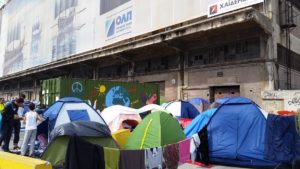
These are some photos I captured when I volunteered at a refugee camp in Piraeus, Greece in 2016.






These are some photos I captured when I volunteered at a refugee camp in Piraeus, Greece in 2016.
The journal, “Subversive Consumption: Nineteenth Consumption Irish Immigrants in America,” by Linda Scott studies Irish immigrants during the nineteenth century in relation to religion, politics, gender norms, race, and labor. The Irish were the first group to immigrate to the United States after the American Revolution. With them, they brought different religious views, as they were Catholic, compared to the majority Puritan that currently lived in the United States. Specifically in New England, the rules and policies were strict because of their Puritan faith. This led to a hatred and opposition to the Irish Catholic faith, as well as the Irish immigrants themselves. They attempted to marginalize those who were Catholic, not only because these, “new populations radically changed the numbers living in the eastern US, but because the religion and ethnicity of the immigrants were so different from those of the former American colonists: wave after wave of Irish, German,Italian, and Russian arrivals were distinctively Catholic and Jewish,” (Scott, 2009). The a huge reason for the Irish to immigrate was the potato famine in 1845. This rose the current immigration numbers from 10,000 to almost half a million each year. This changed the profile of America in several aspects, such as religious views and race. Irish were seen as “aliens,” and were often not allowed to apply for jobs because people refused to hire them. Catholics could not vote, hold office, own property, or allowed to educate their children (Scott, 2009). The Irish started to come together within their communities to fight back against this oppression. They often did not go farther than New York or Boston. A huge recognition of the Irish assimilation came in 1999 with a postage stamp, which was created by the US and Ireland, remembering the immigrants who came because of the Famine (Scott, 2009).
Article: https://eds.a.ebscohost.com/eds/pdfviewer/pdfviewer?vid=11&sid=49834cf4-37c5-4c7a-9b29-79324985ccbd%40sessionmgr4010
In a more recent article after Trump’s administration policy went into effect in regards to asylum seekers, those very asylum seekers are now asking to stay in the United States because they fear for their safety. As this was a known issue when the policy went into effect, this plea is expected. More than 240 people have been returned to Mexico since the policy was enacted. These asylum seekers that appear in court in the United States have to return to Tijuana under the policy, but Tijuana has been very violent lately. The article states, “Tijuana, like much of Mexico’s northern border zone, has seen extensive bloodshed since the federal government began using the military against drug cartels over a decade ago.” Lawyers for the asylum seekers are attempting to ask for their clients to remain in the United States. While Mexico claimed that they would set up work permits for the asylum seekers as they wait for their court hearings, they have not provided details about how to obtain a work permit. The backlash against the policy continues as “The American Civil Liberties Union and other advocacy groups are suing in federal court to halt the MPP program.” The government explained that this policy was created to end our “generous immigration laws.” These groups and critics of the legislation says it violates United States laws and will be watching closely as the court dates proceed. The safety of the asylum seekers is a main concern, especially with having to go back and forth between the United States and Mexico.
Link to article: https://www.reuters.com/article/us-usa-immigration-asylum-mexico-idUSKCN1R01Q5
In an article by the New York Times, “Trump Administration’s Asylum-Seeker Policy Takes Effect” written on Jan. 29, 2019 outlines Trump’s new policy towards asylum seekers. This policy forces them to wait in Mexico for their cases to be processed. The legislation allows for asylum seekers to enter the states only for court appearances. Asylum seekers previously were allowed to remain in the states while their cases were filed and put through the system. Mexico is supposedly working with the United States on this new policy, but are still trying to figure out the process. Asylum seekers are granted a special visa to come and go during the court proceedings. The issue with this policy is that, while Mexico has committed to protecting those asylum seekers when they are in country, these human beings are fleeing their country because of their concern for their safety. It is still unknown if this legislation will cause further harm. There has been significant backlash from advocacy groups over this bill because of the concern over safety. Another aspect is the fact that the borders are already overwhelmed with the number of people fleeing and trying to enter the United States, which adds another element to this policy. The United States said that they would only return men who are single to Mexico. It is expected that advocacy groups will fight this policy in the hopes to change it. As the flow of asylum seekers to Tijuana grows, new individuals are shocked to hear the news. These individuals did not plan on staying at the border for longer, but are still hoping for freedom and better opportunities.
Link to the article: https://www.nytimes.com/2019/01/29/world/americas/asylum-seekers.html
I found Carlos Hernandez’s visit really insightful and I am glad Stevenson was committed to bringing him in to share his work. As someone who is interested in becoming a writer, whether professional or just for fun, his suggestions and knowledge were extremely helpful. While I enjoyed his poetry, his extra backstory to his work helped to further understand the imagery and the plot. The “inside” information, such as getting paid 6 cents a word, were great information to know, as well as the sites he provided such as duotrope to look into if you were interested in writing. It also motivated me to start writing and try to publish work, regardless if I believe it is good enough because that starts the learning process. I really enjoyed his visit and what he had to share with us.
In Chapter 27, Obinze visits a bookshop cafe and started focusing on reading American newspapers and magazines, rather than the British ones. The reason was that these, “stoked panic in his chest,” (Adichie 317). Later, a woman on the train was reading a paper that had a title about immigrants. The interesting aspect of this chapter was how lonely Obinze seems as someone who is trying to obtain citizenship, especially with his sentence that stated, “his existence like an erased pencil sketch,” (Adichie 318). It brought up aspects of past British colonization and current immigration. He goes on to say that, “the influx into Britain of black and brown people from countries created by Britain. Yet he understood. It had to be comforting, this denial of history,” which I thought was particularly powerful and I was able to draw parallels between that and what is currently happening in the U.S. in relation to immigration (Adichie 320).
Question: Do you think countries that have colonization in their past should be working harder to address racism, as well as be more open with their borders towards immigrants, refugees, and asylum seekers?
Adichie, Chimamanda Ngozi, et al. Americanah. Penguin Random House Grupo Editorial, 2017.
For my grant proposal, I would like to partner up with Lutheran Immigration and Refugee Service to connect refugees and immigrants with the outdoors. LIRS vision is to allowed refugees to be, “empowered in a world of just and welcoming communities statement.” This will help to connect them with Baltimore’s community, as well as familiarize them with the area. While providing for refugees is of utmost important, time to relax is important for mental health. The $1,500 dollars would go towards equipment, whether that is sports related (such as baseball bats) or kayaks for exploring the inner harbor. This equipment would last long term and would be beneficial. Stevenson athletes could even get involved to come play with families and children in their respective sport.
As I sat in a crowded room full of future entrepreneurs, we all looked at the panel of current entrepreneurs, ready to learn as much as we possibly could in an hour and a half. After the panelists, such as Chris Daley, who is a professor here at Stevenson, provided some background information about themselves and their businesses, the more specific questions started being asked. There were several inspirational stories about how they first started thinking about being entrepreneurs, such as one quote that, “If you can make a dollar on every t-shirt, all you have to do is sell a million t-shirts to make a million dollars.” The entrepreneurs were knowledgeable, personable, and had many life stories to share with us. They were willing to answer any questions we had to help us to prepare better for our future. Consistently, they all spoke of experiences when they saw employers or others doing something that they believed they could do better. These situations motivated them to become entrepreneurs. One of the panelists, who worked for Enterprise, spoke of how she began in sales and was doing so well that a promotion would have caused her a pay cut. This made her pursue a higher position and take over a branch for herself. They cautioned that one should, “always have two forms of income,” in case the tides turned against you. Networking was a key aspect that they emphasized in everything they did, as well as running their potential ideas by other entrepreneurs to see what their thoughts on the idea were before pursuing it. Perseverance and being relentless was a common mentality that they discussed as being key in the realm of entrepreneurship.
In relation to my career goals, I am not interested in becoming an entrepreneur. Although, I do believe a majority of what was shared can be applied to my future work. It is always important to take advantage of opportunities like this because individuals that are in the work force are a valuable resource.
For this rhetorical analysis, the Lutheran Immigration and Refugee Services (LIRS) website will be the focus. LIRS is an organization that assists refugees and immigrants in the United States. For the website, the author, purpose, context, audience, and genre will be reviewed from the information gathered on the website. The structure and organization of the website will be analyzed also within these categories. LIRS is an easy to navigate webpage that is chalk full of valuable information about refugees and immigration, while it also fundraises and gathers volunteers, all in one website.
When the LIRS home page is accessed, it presents the most educational information about their organization, the work they do, as well as their volunteers and how one can donate.
The website is set-up in a user friendly manner. The navigation bar is located at the top and is organized logically for the user, as can be seen below.
![]()
The navigation bar is the source of all the different main pages, subpages, and information. The website is comprised of several authors and contributors, which are those from their leadership group and their organization. Some of these individuals are outlined in the below picture, which can be found on their website.
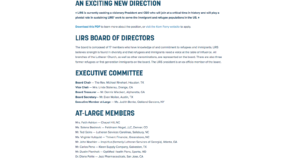
The organization establishes credibility through their background and history, as well as the stories they share about the people they have assisted. This information is presented on LIRS homepage, which can be seen below. First, the stories of the people LIRS have assisted are presented.
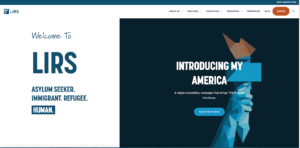
Then, the “About LIRS” page provides their mission statement and more information about their work.

While the website does present a bias, it is a trustworthy source. The reputation is that of non-profit work and the website helps to support that reputation. The home page presents the stories of immigrants, the about portion of LIRS, stating their mission statement, which is ““For almost 80 years, Lutheran Immigration and Refugee Service has been a champion for refugees and migrants from around the globe. Our history reflects American Lutherans’ deep immigrant roots and passionate commitment to welcoming newcomers, especially those who are most in need. Through the Long Welcome, we help ensure that refugees and migrants are protected, embraced, and empowered in a world of just and welcoming communities,” (Lutheran Immigration and Refugee Service, 2019).

The purpose of this website is to gain donations, educate the general population about their organization, as well as provide information and resources for those that are in need. The above image can be found on the main page of LIRS, while a separate donation page can also be found on the navigation bar at the top of the website. That donation page can be seen below.
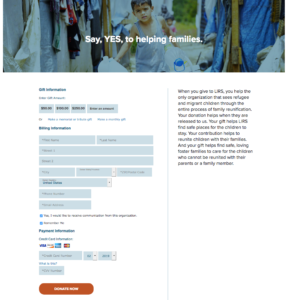
The website also helps to connect people, whether it is volunteers to refugees or those who wish to donate. The reader can conclude this information from their “About LIRS” page, their impact page, their page asking individuals to sign up for their newsletter, and their donation page. Their impact can be seen in the below image, which is a continuation of their about page.
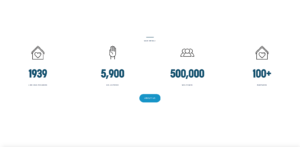
The medium of this resource is a website and it is used to reach the maximum amount of people, both with purpose of finding the website and general browsing. The website uses video within its site which is another mode that is utilized. A website is free to access and is accessible by anyone who has access to an electronic device. It provides the most information to the maximum amount of people. Although, a downside is that some refugees or immigrants may not access to technology. This organization is shown through a website, but it does have physical locations in Baltimore, as well as an office in D.C. The internet did not exist when the organization was created in 1939 so this outlet is relatively new and constantly changing (Lutheran Immigration and Refugee Service, 2019).
At the beginning of LIRS, it was operated out of Lutheran Churches (Lutheran Immigration and Refugee Service, 2019). At that time, newsprint, pamphlets, and word of mouth were important in connecting people. The website uses videos, pictures, and links to other resources within the site. Readers can watch videos, click links, read the information presented, and browse the entire website. One of those videos can be seen below, which is on the website’s volunteer page.
The intended audience would be those who are willing to donate to the organization, hence the large and orange donate button on the right hand side of the website, which distinguishes it from the rest of the navigation bar. The primary audience is also those who are immigrants and refugees that are looking for assistance. The secondary audience would be people that are looking to get involved and help, such as our class. The secondary audience also are those who just come across the website as they browse the internet. The people who want to donate to this type of organization and help volunteer are human rights activists that support non-profit organizations. The author and website appeal to these values and opinions by outlining the humanitarian work the organization does everyday. These values are outlined in the “About Us” page.
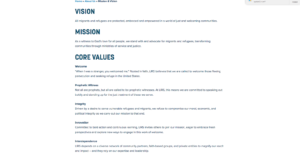
The genre of this website is a non-profit informational website. It is used as a resource for people to be involved in the organization, whether that is through volunteering or donating, as well as those who need information that are refugees or immigrants. In comparison to the other two websites provided (Maryland Immigrant Rights Coalition and Catholic Charities), the texts are very similar in set-up, context, genre, and audience. They all hope to achieve the same goal. The image below invites everyone who visits the site to join their newsletter to stay connected and involved with LIRS.

The website is uses mostly blue tones and white as its color scheme. Pictures of refugees, immigrants, asylum seekers, as well as people who work in the organization are presented on the site. People can access the website on their tablet, phone, computer, or laptop at any time they chose. The main page is organized in an interesting fashion because even though there are several things on the home page, they take up the entire screen to help the viewer distinguish the different categories.
Regardless of what sub page you visit, the footer is always there as well as the navigation bar for easy access. This is the footer of the website, which has their address, as well as the “fine print” details of the website and organization.

In this rhetorical analysis, the author, context, genre, purpose, and audience were reviewed and identified in detail in regards to the LIRS website. As these items were identified linguistically, a visual guide to the website was also presented for an enhanced understanding. This spatial organization allowed for the material to connect with the reader on a deeper level. The website is easy to navigate and is pleasing to the eye. The Lutheran Refugee and Immigration Services has created a powerful website to garner attention for their work, educate the masses, and call for fundraising and donations.
Works Cited:
“Lutheran Immigration and Refugee Service.” LIRS, 6 Feb. 2019, www.lirs.org/.